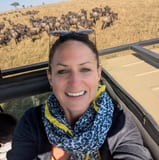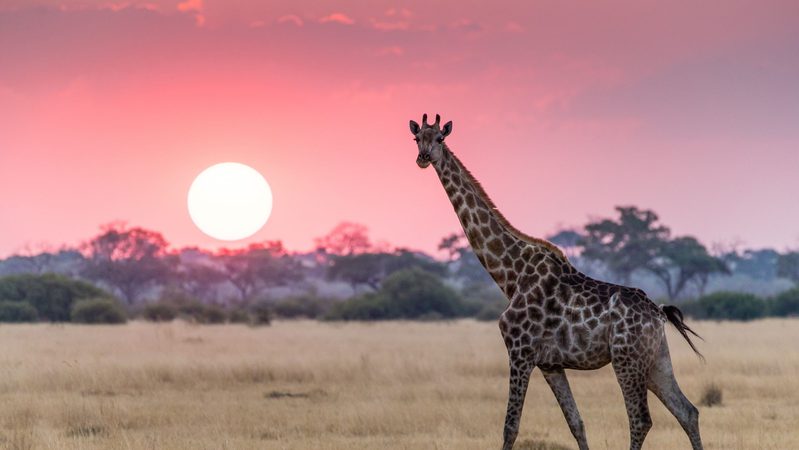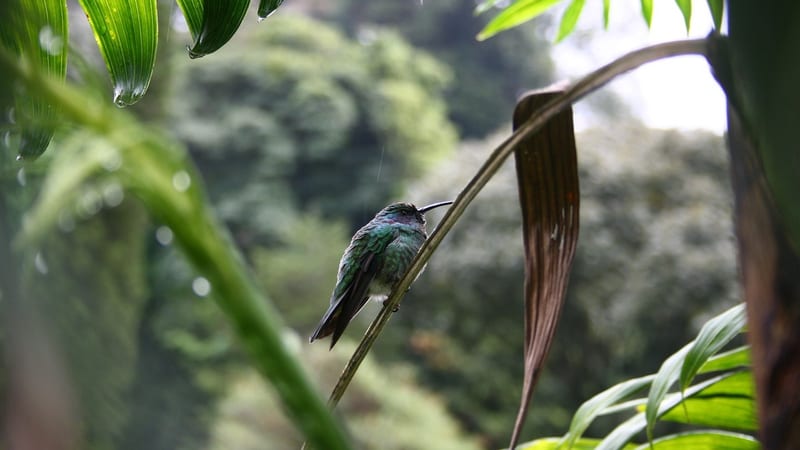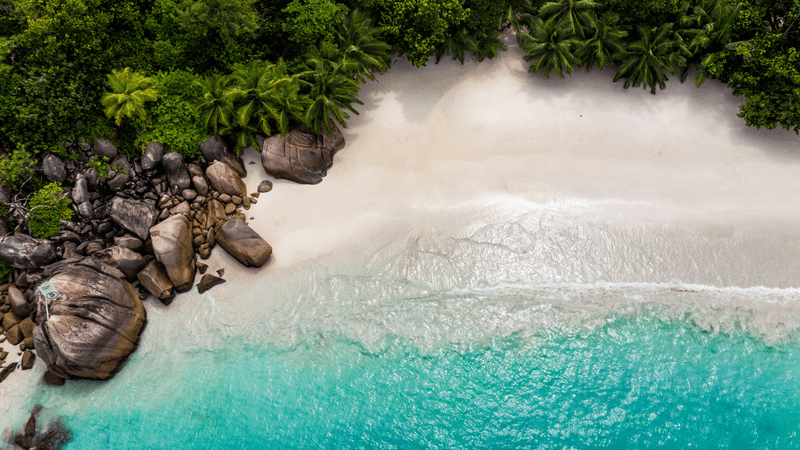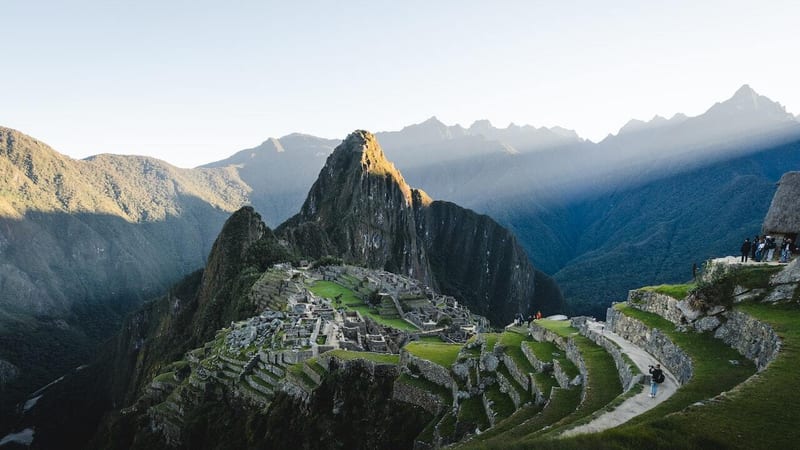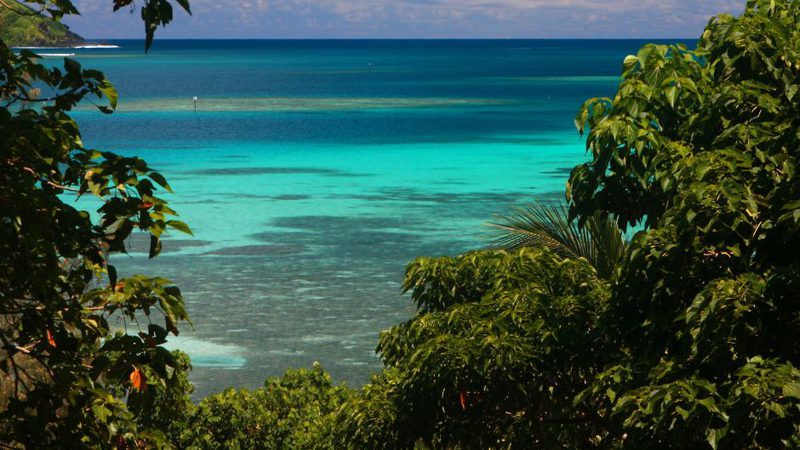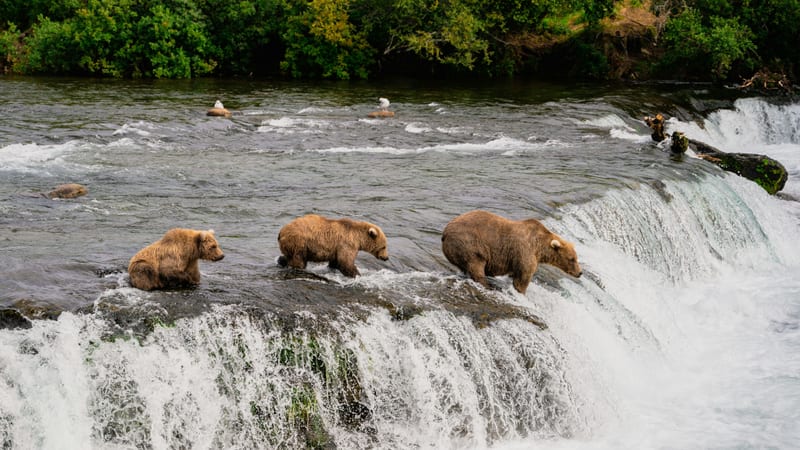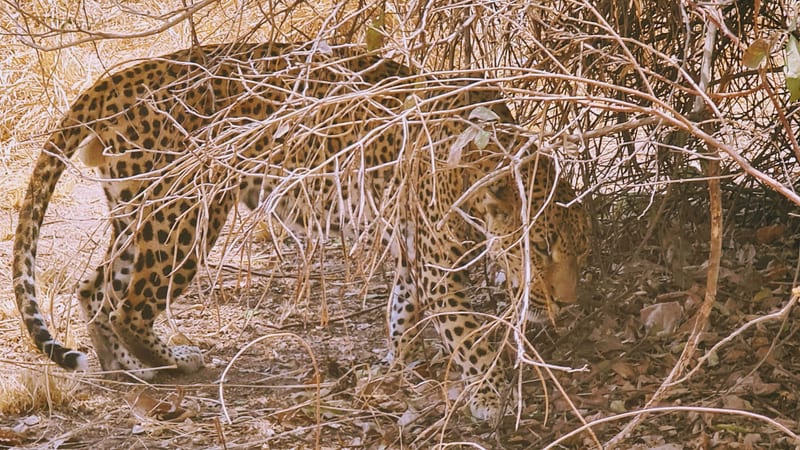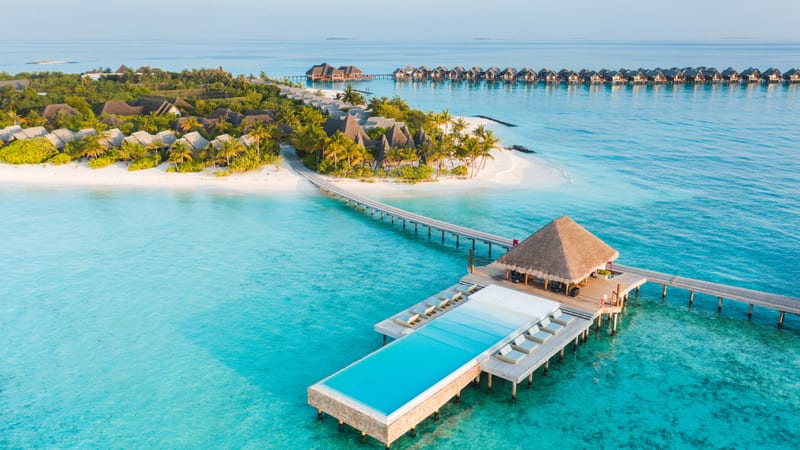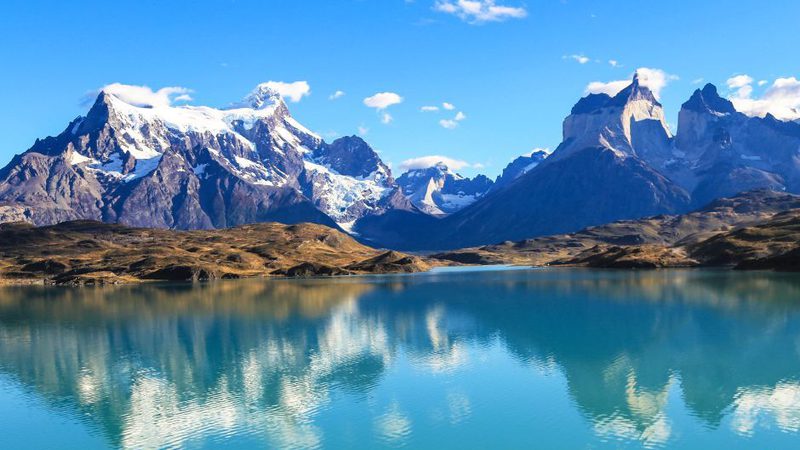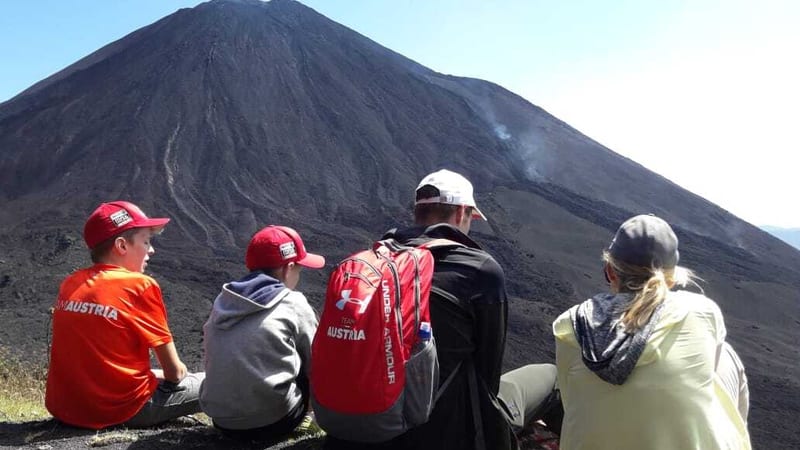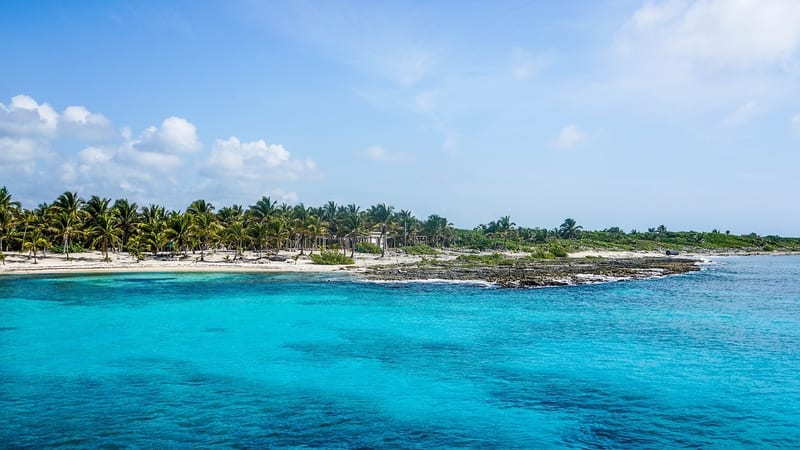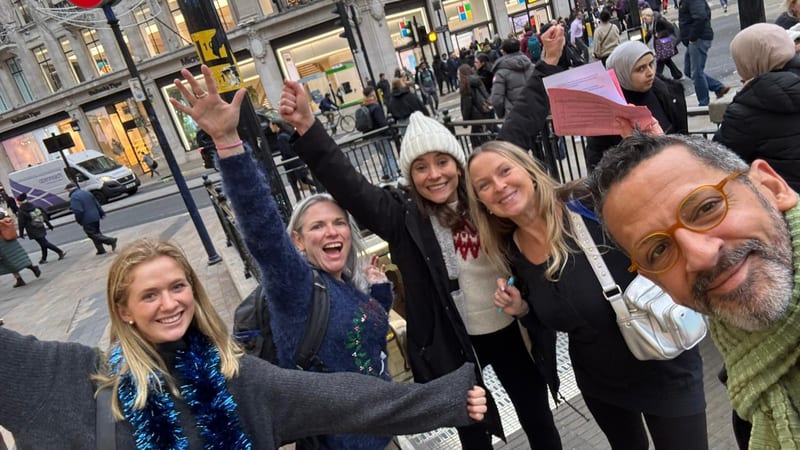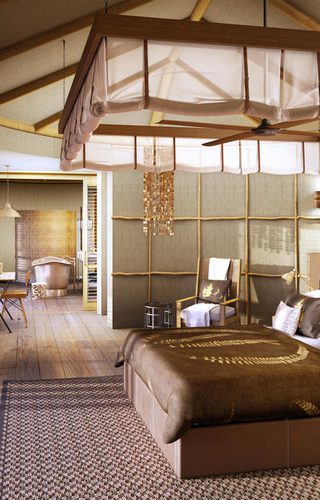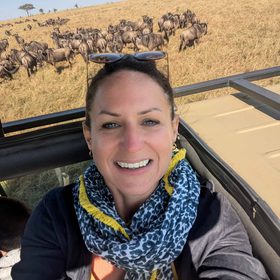One often finds that animals take refuge under the rooms, which are up to two metres off the ground
Location: Mombo Camp sits on Mombo Island, at the northern tip of Chief’s Island in Botswana’s Okavango Delta. Surrounded by open floodplains within the Moremi Game Reserve, this area is celebrated as the ‘Place of Plenty’ for its remarkable density and diversity of wildlife. The camp rests in the shade of mangosteen, ebony, and fig trees, overlooking sweeping plains where predators and plains game gather in abundance. Elevated walkways link each area, allowing animals to move freely below while guests take in uninterrupted views of this extraordinary wilderness.
Rooms: There are nine luxurious canvas tents, all raised up to two metres off the ground to ensure safety and remarkable wildlife viewing from the comfort of your room. Animals often seek shade beneath the suites, adding to the sense of immersion in the wild. Each tent features a spacious bedroom, lounge, and en-suite bathroom with both indoor and outdoor showers, as well as a private veranda and shaded sala. Thoughtful touches, from elegant furnishings to natural textures, create a sense of understated luxury perfectly in tune with the environment.
Amenities: The camp’s central area includes a stylish lounge, dining space, bar, and swimming pool, all designed to make the most of the panoramic floodplain views. There is also a gym and a small boutique, along with a traditional campfire where guests and guides gather in the evenings. Meals are prepared with conservation in mind, using fresh, locally sourced ingredients wherever possible. Mombo’s elevated design ensures every space connects seamlessly with the landscape, from breakfast at sunrise to stargazing after dark.
Activities: Mombo is renowned for offering some of the best year-round big game viewing in Botswana. Morning and afternoon drives reveal dense concentrations of wildlife, including lion, leopard, cheetah, wild dog, hyena, elephant, buffalo, giraffe, and vast herds of antelope and zebra. Rhino, reintroduced to the area through the Botswana Rhino Reintroduction Programme, can also be seen on occasion. With its natural abundance of prey species, predator sightings are frequent and thrilling. Game viewing from camp or the nearby hide often feels just as rewarding, with wildlife passing within metres of your deck. Helicopter excursions can also be arranged for an unforgettable aerial perspective of the Delta.
Sustainability: Rebuilt in 2018, Mombo Campwas designed to tread lightly while continuing its legacy as Botswana’s flagship conservation camp. The entire property runs on solar power, and the rebuild incorporated repurposed materials to minimise waste. The camp supports a range of conservation initiatives, including a baobab protection project that safeguards and nurtures young trees to ensure their survival for generations to come. Mombo’s partnership with the Wilderness Trust helps fund research, education, and wildlife protection programmes across the Delta, ensuring that this ‘Place of Plenty’ continues to thrive for both animals and people alike.
Best places to stay in Moremi Game Reserve
Moremi Game Reserve Trip Inspiration
When to go to Botswana
Find out the best time to visit Botswana with our month-by-month guide.
- Best
- Good
- Mixed
- Jan
- Jan
- Feb
- Mar
- Apr
- May
- Jun
- Jul
- Aug
- Sep
- Oct
- Nov
- Dec
January
January is the heart of the wet season, with heavy downpours usually in the late afternoons, which is a great excuse to watch the storm from the luxury of your camp or lodge. Much of the wildlife is still there it may just take a little longer to find as its more dispersed due to the surrounding surface water. This time of year is hot, and aside from the rainshowers it's sunny. This is the best time to see the Zebra and Wildebeest migration as well as large flocks of flamingos down in the Makgadikgadi Salt Pans. Rates are lower during the wet season.
January
January is the heart of the wet season, with heavy downpours usually in the late afternoons, which is a great excuse to watch the storm from the luxury of your camp or lodge. Much of the wildlife is still there it may just take a little longer to find as its more dispersed due to the surrounding surface water. This time of year is hot, and aside from the rainshowers it's sunny. This is the best time to see the Zebra and Wildebeest migration as well as large flocks of flamingos down in the Makgadikgadi Salt Pans. Rates are lower during the wet season.
February
February is also one of the warmer months, and is defined by both sunshine and heavy storms, which making it another great time for photography. It's now that the Central Kalahari begins waking up, with herds of game coming to graze the lush grassland. Again the peak migration should be in the Makgadikgadi now with large herds of wildebeest and zebra in the area. Game viewing is still great in many areas of the Okavango Delta with many of the dried camps on the western side top choice.
March
The wet season slowly comes to an end, leaving hot, drier days. There is still some rain, but only for short periods during the afternoon. Enjoy the green scenery and the lower accommodation rates. Towards the end of March the wildlife in the Central Kalahari really begins to pick up as large numbers of plains game head in the pans and Valleys. This is a great time of year to combine the Central Kalahari and Okavango Delta.
April
April is a fine month to visit Botswana, as the nights become cooler and sleeping is easier. Breeding season is underway for plains game, so keep an eye out for the clashing males attempting to woo the females out on the savannahs. Along with the breeding season comes more predator activity as the young animals are easy pickings. This is peak game viewing time in the Central Kalahari Game Reserve making it an integral part of any itinerary.
May
With the rainy season at an end, the temperature falls, making bush excursions more pleasant. Nights can be a little chilly, so you'll probably need an extra layer if you're heading out on an evening game drive. Skies become clearer and there are fewer mosquitoes. This is one of our favourite months to travel and also marks the final month before the peak season rates kick in in most camps.
June
June is the middle of winter in Botswana, and is one of the best times to visit the country. Days are pleasantly warm, and nights are spent tucked up cosily in your camp or lodge. Wildlife becomes concentrated around waterholes making it easier to spot. This is a great time to visit the Okavango Delta, Moremi and Chobe.
July
With warm sunny days, and cool nights, July is the perfect time to be in Botswana. Although this is the dry season, it's a great time to enjoy a traditional mokoro canoe trip as floodwaters begin to rise in the Okavango Delta, flowing down from the highlands of Angola.
August
The temperature begins to rise again in August, but it's still a superb time for game viewing, and the Makgadikgadi Pans are now accessible through until October. Water is now scarce in many of the parks, making game viewing easy. It's a good time to visit Savute and Linyanti.
September
Days in September are hot with sunny blue skies, and the nights are no longer cold. It does get quite dusty out in the bush thanks to many months without rain, and game viewing is excellent as predators and prey alike hunt to find water.
October
October is warmer, and safari activities take place during early mornings and late afternoons to avoid the worst of the heat. This is one of the final month before the rains come and the ground is at its driest making for exceptional game viewing. If you don’t mind hot days this is one of the peak game viewing months
November
November remains hot, but the rains return mid-month, bringing the plains and forests back to life. If you want to see young animals being born and lots of predator action, this is the month to come. With rates dropping in November and the rains often falling later on in the month, the first 2 weeks of November are a very popular time to travel. It also ties in nicely with the great weather in Cape Town and the Garden Route.
December
The rainy season is now in full swing with often short heavy downpours in the evening, days are still mostly sunny. Landscapes are lush, and there is plenty of wildlife activity as the newborns flourish.
Speak to a Botswana expert today
and start planning your tailor-made holiday

Alistair
